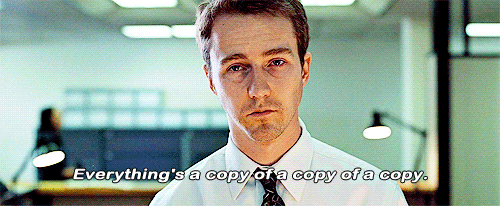
If you’re cross-posting material online, being paid to include links in a post, or linking to material which raises ethical challenges around taste and decency, there are two snippets of HTML you should be aware of. Here’s a quick guide…
Cross posting: use canonical links
It’s not uncommon to post a copy of your work on your personal blog, or for someone to ask if they can republish on their site something you have written on yours.
In these cases, however, Google (or Bing) can actually penalise one of those sites for hosting duplicate content.
After all, how does it know that the content hasn’t been ripped off?
Well, you can tell it with this bit of HTML:
rel="canonical"
It goes inside the link HTML like so:
<a href="https://onlinejournalismblog.com/2016/02/04/link-ethics-canonical-and-nofollow" rel="canonical">This article was first posted here</a>
A search engine following links will now know that the link leads to the original version of the article, clearing up any confusion (the original should also be the preferred version in search results).
You can find more information on Google’s support page on this,
Paid links and dodgy links: use nofollow?
If your site is at all successful it is likely that you’ll either be approached by people offering to pay to include links on your site, or by people offering to write content for your site for free (not mentioning that they’ve been paid to include links in that content).
This is pretty dodgy territory, typically because it is a way of manipulating search results by making a page look more linked-to than it really is. In other words, it’s like advertorial which doesn’t say “advertorial”.
For that reason, search engines frown upon this, and will penalise sites that do it (it’s called linkspam)
But you can tell search engines that the links were paid for, with this:
rel="nofollow"
As the W3C describe it:
“The
nofollowkeyword indicates that the link is not endorsed by the original author or publisher of the page, or that the link to the referenced document was included primarily because of a commercial relationship between people affiliated with the two pages.”
Once again, you include it in the link HTML like so:
<a href="http://dodgyspamsite.com" rel="nofollow">Here's the place that paid me to say this</a>
Related: |
By the way, nofollow is also automatically applied to any links in comments and most forums, to prevent comment spam, the main reason Google first introduced it.
Links that make you think twice: nofollow?
This last example is down to personal judgement. Sometimes as a journalist you may face a decision about whether to link to content which is relevant to the story, but which you may not want to drive all readers to. Examples include:
- Illegal sites
- Sites promoting bad things
- Material which some people may find offensive
- Material which may be disturbing
There are two steps to this decision: the first is whether to link at all. You may decide for example that it is up to the reader whether to click or not, and to warn them accordingly.
But there’s a second impact of linking: search engine ranking. It may be that you trust your readers to make an informed decision within an editorial context, but do not want that to make the webpage more visible to people using search engines.
Adding rel="nofollow" does allow you to separate the first decision from the second.
I’d welcome any comments or examples on this last issue particularly.

Pingback: We’re reading…. (weekly) at Directors' blog
Pingback: #MediaPuls - Instant Social Twitter Days | HansPetter.info
Pingback: Medier24.com | MediaPuls: Instant Articles er kommet, Social Media Days er blitt voksen – og algoritmer kommer til Twitter
Pingback: If the Daily Mail ‘steals’ your visualisation, they’re giving you publishing permission on their site | Online Journalism Blog
Pingback: Make a link – newsgirl
the rel=”canonical’ is a nice tip, even though I think that copying the content of another author still bad in terms of crawling and indexing a keyword. I am writing an article on that and in the next days, I will ping you for this article. Even if I could’ve found this information online, I decided that bloggers should help each other instead of linking other authoritative sources that does not benefit the own SEO. I did not open yet my blog, but soon I’ll invite you to read it. Greetings.
I think you misread the post – I was talking about posting a copy of your *own* article on a second platform. For example, I am sometimes asked to write something for the BBC Academy blog, but I like to publish a copy on this blog, too, in case the BBC version disappears.
Yeah.. it makes sense, especially if you are the author of both articles. However, i linked you article in my post here as I announced you previously:
I linked you for the keyword “canonical”. I hope you can come and visit my page. Thanks
The problem with testing it is that you need nofollows from great sites – Wikipedia is just one example 👍 – and you can’t really get those without earning follow links as well. Still, my guess is that a link from a Wikipedia article will boost rankings.
Reblogged this on Matthews' Blog.